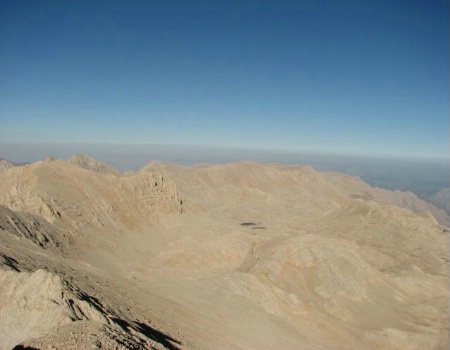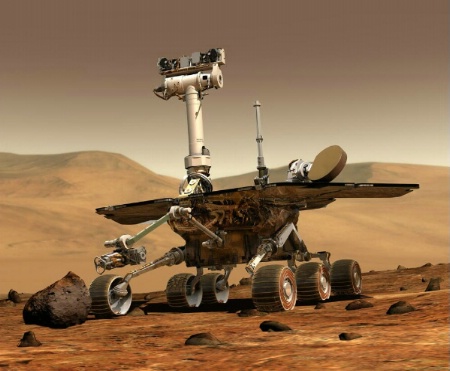
Nina Briskina |
|
How to shoot the valley from the peak
|
|
|
|

View on Seven Lakes Valey, Turkey
Shutter speed 1/1600; 16:30 PM;
Nina Briskina
|
|
|
|
I shot the valley, while standing on the mountain peak (3700 m). When I looked at the view -it was deep and breathtaking. When I take a picture, It appears - flat - no one could imagine that it is a valley vew from the highest point. I didn't use the zoom, the light was 1/2 hour before the sunset, and I use the small aperture..
Could you advice ,please?
October 30, 2007
|
|
|
W. |
|
Your TWO-eye system is stereoscopic: hence it can see depth.
Your camera only has ONE 'eye', hence it canNOT see depth.
October 30, 2007
|
|
|
Nina Briskina |
|
Does it mean that it is impossible to receive the desired effect with the camera? Only using my eyes?
October 30, 2007
|
|
|
Todd Bennett |
|
Nina, To add to what W. has said, you also have nothing on the hill side and in the valley to give you any contrast. The color of the land is one color and flat leading to a flat photo. There are no shadows from the ridges, no trees, etc. to give you any contrast which is going to make it look flat. You might try, if you are able to go there again, and shoot it even later to see what the setting sun has to offer.
October 30, 2007
|
|
|
W. |
|
|
|
|
|

Mars Rover stereo cam
W.
|
|
|
|
With YOUR camera it is indeed impossible, Nina.
With a specialized stereoscopic camera (which is actually TWO cameras) it IS possible. IF you also have the gear to view it with:http://en.wikipedia.org/wiki/Viewmaster
http://www.fisher-price.com/fp.phpx?t=page&a=go&s=viewmaster&p=landing_flash&site=us To illustrate:
the Mars rovers have stereoscopic cameras on board, as you can see in the pic.
October 30, 2007
|
|
|
Nina Briskina |
|
Thank you for your answers. The shadows makes sense - but, unfortunaly, I could not try it again at the same place...
So I suppose when I'll fly to Mars, I will be for sure equipped with stereoscopic camera....
But now I recognized that I had one viewmaster in my childhood, exactly like in picture of wikipedia.
October 30, 2007
|
|
|
W. |
|
"I recognized that I had one viewmaster in my childhood"Who didn't?
They've been around for more than 3 generations: since 1939. Barbies still have to catch up to that. Only Teddy Bears have a longer history.
October 30, 2007
|
|
|
Pete H |
|
Nina, Your photo was obviously shot at a fairly wide angle..This will always produce a "flat" looking image. Zoom in for more depth perception and shoot from a low angle. There is a photo in my free gallery called "Erosion of Planet Earth." To some it almost looks 3D....shot at 150mm and from down low..really helps.
all the best,
Pete
October 31, 2007
|
|
|
Nina Briskina |
|
Thank you, Pete, for the answer.
You picture indeed looks as 3D.
But I am afraid, I could not fully understand your advice - I did not use zoom at all with hope that it will give me some depth... When you speak about low angle - you mean that I have to lie on the earth to take this picture? But will it affect the result? I am situated on the point that 900 meter above the object being shooting. So does it make difference – to stand or to lie?
Thanks,
Nina
October 31, 2007
|
|
|
Robyn Gwilt |
|
Hi all, what about if you'd shot it in portrait instead of landscape (long instead of wide), I think I would have cropped out the sky, so that there was just a sliver of blue, and put the emphasis on the bottom half of the photo, which would have drawn the eye to to valley. The sky is just blue - no interesting clouds, but the contours of the earth and value might have been more accentuated. I've also recently been up some serious valleys/passes and have some examples in my gallery and on my website.
November 01, 2007
|
|
|
Oliver Anderson |
|
I just gotta get one of those New Rover cameras...that's #1 on my Christmas list...Santa's gotta pull through this year...Its been a long time and I tried my best to be good. Sterioscopic Maxim photos will rule.
November 01, 2007
|
|
|
Irene Troy |
|
Hi Nina – You’ve gotten some good advice, but also some that is confusing. I’m going to throw in my own two cents worth of ideas: I think that what you are facing in this particular shot is the almost total lack of contrast. I know that you said you shot this just before sunset; however, the light is very flat, more indicative of what happens when we attempt to photograph landscapes during the middle of the day or when the sun is high on the horizon. Because this scene lacks color contrast you are dependent upon light to give you contrast. If you can revisit the scene, consider doing so at another time of day. Generally the light is the best either very early in the morning – roughly around sunrise and perhaps the first hour or so into the day – or late in the afternoon – roughly the last hour of light and just after sunset. However, every subject requires the right light and sometimes this means violating the rules of when to make your image. Depending upon which direction you are facing when composing your shot, you might find that the light is best just around sunrise rather than sunset. The sand color of these hills does not offer any sense of height or depth thus making it almost impossible to notice that this is a valley and not just a series of flat hills leading off into the distance. Images such as this call out for some object that will help provide perspective. A tree, pile of rocks, etc. are great objects for adding this perspective; however, in this situation it does not appear as if you had the benefit of any such object. People in the scene can also provide the viewer with a sense of perspective. Several people have mentioned the difference in how the camera lens sees a scene and how our eyes see the same scene. This is very important to understand. However, it is equally important to understand what the viewer sees when looking at your image. The best images tell a story – often a very short story, but a story none the less. You have to provide something to draw the viewer into your scene so that they can see what you saw when making that image. The flat tonality and lack of contrast of this image says very little to the viewer. I struggle with this idea myself and often view my images and ask what it was that I was trying to capture. If I can’t figure it out how can I expect anyone else to? I kind of like Robyn’s idea of shooting this scene as a vertical. Cutting out the sky, or at least most of the sky, might help to draw the eye into your scene. Of-course, you still need some way of showing the contrast and depth in the image. Hopefully, something here will be of help to you. Keep working on this idea, either at this location or elsewhere, until you capture the image in the way that feels right to you. Good luck and have fun! Irene
November 01, 2007
|
|
|
Robyn Gwilt |
|
Hi Nina, this just arrived in my email
http://www.goodphotographyinfo.com/lesson3lightandshadow.html
I think its quite informative, re the light etc., and what Irene has also said. Sometimes you also just got to move around, change the angle, and wait for a better time of day/light :)
November 01, 2007
|
|
|
|
Log in to respond or ask your own question.
|